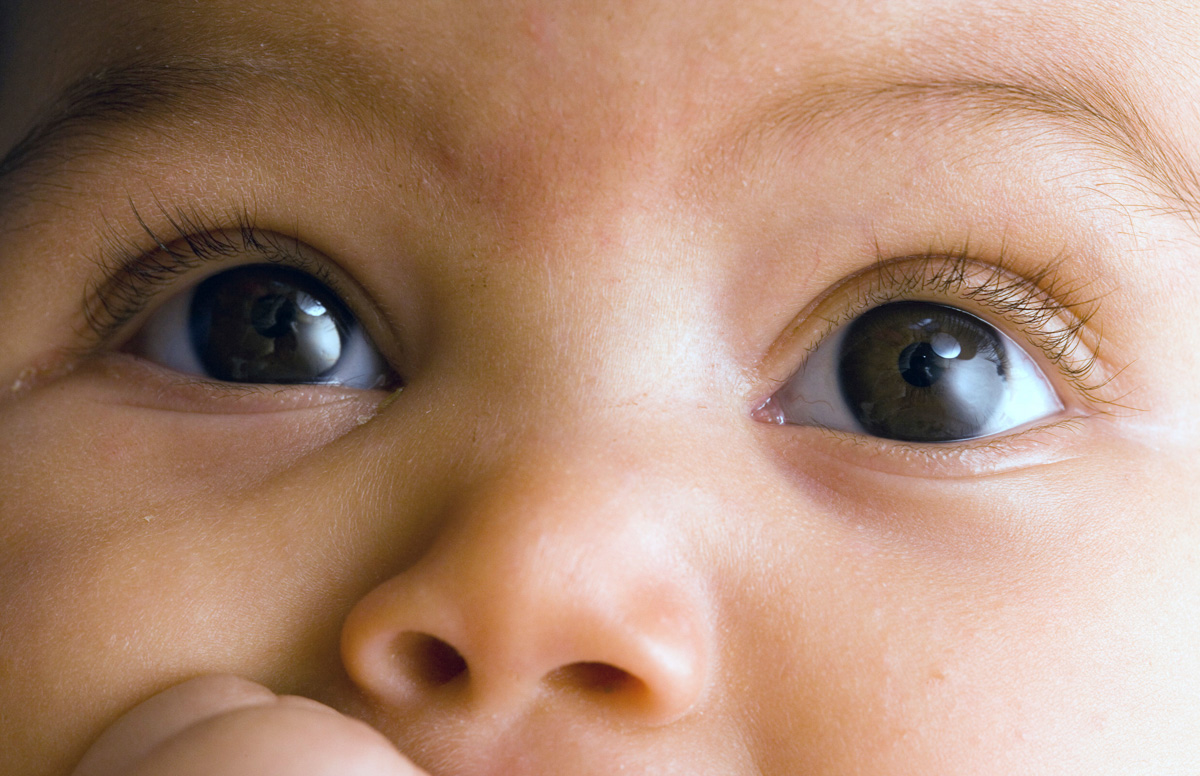The optic cup is shaped like a catcher’s mitt and forms the back of the eye. The front layer of the optic cup will become the colorful iris and the muscles that change the size of the pupil. The back layer of the optic cup will become the light-sensitive receptors in the retina and the neurons that connect the retina to the brain. In week 9 the pigments in the retina are visible. Also, the critical neural connection between the back of the eye and the brain, called the optic nerve, has formed.4
The front and back of the eyeball fuse together by week 10, and muscles start moving the eyes by week 12.5 Eye movements can be detected by ultrasound starting in week 14,6 and can reveal whether a baby is awake, asleep, or dreaming starting in week 23.7
The light-sensitive receptors in the retina are called rods and cones. Interestingly, just as neurons stop forming late in pregnancy, new rods and cones stop forming too. Cells stop dividing in the center of the retina, called the fovea, around 16 weeks gestation, and cells stop dividing in the outer ring of the retina around 31 weeks.8 Rods let the eyes detect very small amounts of light, and they detect light at the edges of a person’s vision. By contrast, cones mostly detect light in the center of a person’s vision and produce sharp, colorful images. Adults have 100 million rods and 7 million cones in each eye.9 Rods and cones are formed all over the retina, but in adults, rods are mostly found in the periphery and cones are found in the fovea. Cones move towards the center of the retina, called the fovea, and rods move out of the fovea throughout pregnancy and for many months after birth.10 In fact, the fine maturity of cones is not complete until at least 4 years old.11
Premature infants can look at objects or lights starting between 30 and 32 weeks. These infants start moving their eyes to track moving objects at 34 weeks.12 Interestingly, they look preferentially at a pattern over a gray circle starting at 34 weeks. This is especially impressive because their visual acuity is around 20/2000.13 Simply put, that means that an object that an average adult could see 2000 feet away would need to be just 20 feet away for the baby to be able to see it. For perspective, a person is legally blind if their visual acuity is 20/200 or worse. Babies have adult levels of visual acuity around 3 or 4 years old.14
Most infants are born with light blue or gray eyes. A baby’s eye color finalizes between 6 and 12 months old. The color is determined by the distribution of melanin in the iris. Melanin is the same pigment that gives skin its color. If the melanin stays at the back of the iris, then the eye will be blue. If the melanin is found all over the supporting tissue in the iris, then the eye will be brown.15











